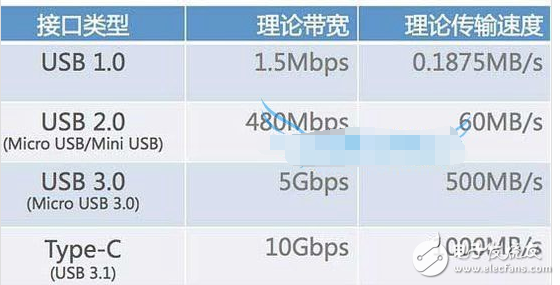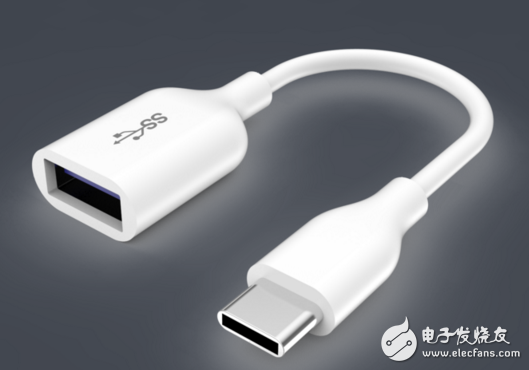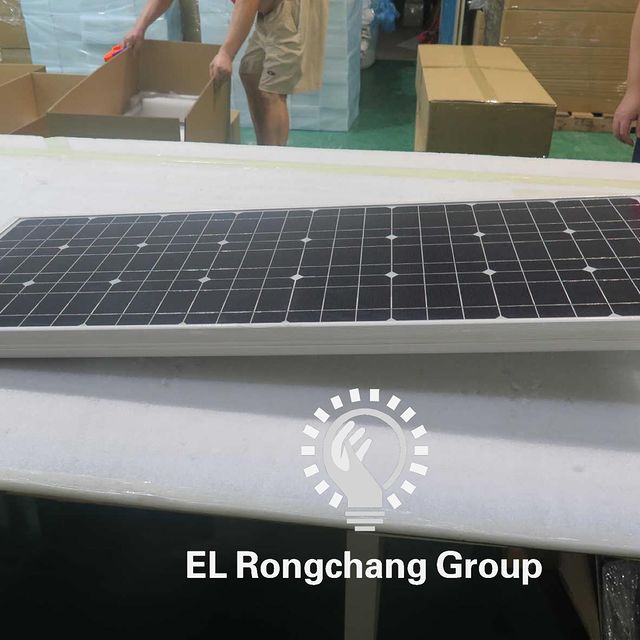The USB-C interface is called USB type-c and belongs to the USB 3.0 next-generation interface. Its highlights are slimmer design, faster transmission speed (up to 10Gbps), and stronger power transmission (up to 100W). The USB-C interface also supports double-sided insertion, and the front and back sides are plugged in, which is more advanced than USB2.0/USB3.0. The USB-C interface was released in December 2013. The USB 3.0 promotion team has already announced the rendering of the next-generation USB type-c connector. It was ready for mass production in August 2014 and is now in smart. Mobile phones and notebooks have been adopted. For example, the Nokia N1 tablet and the 2015 new Mac 12 notebook released by Apple use the USB-C interface, which can be easily understood as the fourth-generation USB interface. Type-c is a kind of connection interface of USB interface. It can be inserted in both front and back. It is about 8.3mm & TImes; 2.5mm. It supports USB standard charging, data transmission, display output and other functions like other interfaces. Type-C was developed by the USB Implementers Forum and became popular after being supported by vendors such as Apple, Google, Intel, and Microsoft in 2014. On August 1, 2015, Techco introduced the world's first mobile solid state drive with Type-C interface. On October 10, 2015, Tieweima launched the world's first USB 3.1 Type-C interface disk array. On January 1, 2016, the world's first Type-C fingerprint-encrypted mobile solid-state hard drive was born, manufactured by Teke Core Co., Ltd. 1, ultra-thin The old-fashioned USB port is 14mm long * 6.5mm, while the USB-C is only 8.4mm * 2.6mm. 2, regardless of the front and back As with the Lightning interface, there is no problem whether it is inserted or not, and it can be said to withstand 10,000 times of repeated insertion and removal. 3, fast transmission speed The maximum transfer rate of the USB-C port is 10Gb per second, which is much faster than USB3.0. 4, two-way transmission Unlike older USB ports, power can only be transmitted in one direction. The power transfer of a USB-C port is bidirectional, which means it can have two transmit power modes. 5, strong power supply The standard-size cable with Type-C connector can pass 3A current, and also supports "USB PD" that exceeds the existing USB power supply capability, and can provide up to 100W of power. 6, backward compatible USB-C is compatible with older USB standards, but users need to purchase an additional adapter to complete the compatibility. USB 3.1 is an industry standard that was initiated by major companies such as Intel. The biggest feature of USB 3.1 is that data transmission is extremely fast, and the theoretical speed can reach 10Gbps. USB Type-C is a connector specification consisting of a Type-C plug and a Type-C socket. In the latest USB 3.1 standard, there are three interface styles, one is Type-A (that is, Standard-A, the most common USB interface style on traditional computers), and the other is Type-B (both Micro-B, currently mainstream Android smart). The interface style used by the mobile phone), the other is Type-C (the interface style of the newly designed design mentioned above). Then we should be able to understand it very easily. Although USB Type-C is designed based on USB 3.1, this does not mean that devices using this connection method must support the USB 3.1 standard; contrary to what we think, it is older. The old USB 3.0 Type-A interface device is compatible with the USB 3.1 standard. USB 3.1 is a transmission standard. USB Type-C is an interface standard. So there is no absolute correlation between USB 3.1 and USB Type-C. Having a USB Type-C interface does not necessarily mean that it supports the USB 3.1 standard. The USB 3.1 standard does not necessarily have to be a USB Type-C interface. The main difference: USB Type-C transmission speed is higher, both positive and negative can be inserted, the charging power is higher.
A Solar Panel, or photo-voltaic (PV) module, is an assembly of photo-voltaic cells mounted in a framework for installation. Solar panels use sunlight as a source of energy to generate direct current electricity.
The main two types of solar panels. Each of these types of solar cells is made in a unique way and has a different aesthetic appearance.
Mono Solar Panel,Poly Solar Panel,Monocrystalline Solar Cell,Mono And Poly Solar Panel NANTONG RONGCHANG IMPORT&EXPORT CO.,LTD , https://www.ergsolarcn.com


What is the interface of USB-C?
January 21, 2023